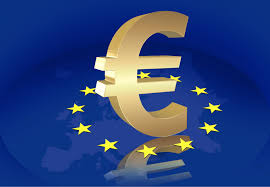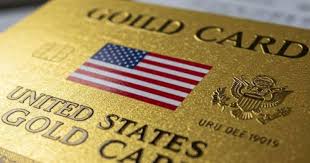On Friday, U.S. President Donald Trump issued another threat to escalate his trade battle.
He imposed a 50% tariff on goods from the European Union beginning on June 1 and warned Apple that he may put a 25% tariff on any iPhones made outside of the United States.
After weeks of de-escalation had given some respite, the dual threats, which were disseminated through social media, rocked world markets.
During early trade, European equities lost 1.7%, the Nasdaq fell 1.5%, and the S&P 500 fell 1.2%.
The announcement caused shares of Germany’s luxury and automakers, which are among the most vulnerable to tariffs, to drop.
The shares for Porsche, Mercedes, and BMW were down 2% to 4.5% at 1320 GMT. The shares for the sunglasses firm EssilorLuxottica was 5.5% lower.
Apple’s stock dropped 3.7% in premarket trade, as did stocks of other tech companies.
Trump did not specify when he would issue his warning to Apple. The United States does not manufacture smartphones, despite selling over 60 million phones there each year.
“The European Union, which was formed for the primary purpose of taking advantage of the United States on TRADE, has been very difficult to deal with,” Trump stated on his Truth Social website.
“Our discussions with them are going nowhere!”
EU trade head Maros Sefcovic and his U.S. counterpart Jamieson Greer will speak over the phone at 1500 GMT, the EU Commission said Friday, declining to comment on the fresh 50% tariff threat.
Later Friday, the 27 EU nations’ envoys are scheduled to gather in Brussels to discuss trade.
Approximately 500 billion euros were exported by the EU to the US last year, with Germany accounting for 161 billion, Ireland for 72 billion, and Italy for 65 billion.
According to EU data, the top exports were pharmaceuticals, automobiles and auto parts, chemicals, and aircraft.
“The EU is one of Trump’s least favorite regions, and he does not seem to have good relations with its leaders, which increases the chance of a prolonged trade war between the two,” XTB research director Kathleen Brooks stated.
European automakers that focus on exports, particularly the big German automakers, are particularly vulnerable and have few short-term alternatives besides price hikes and lesser discounts.
Volkswagen’s Audi and Porsche are not produced in the United States.
Some have already stated that they will shift some production, such as Audi and Volvo Cars.
Hakan Samuelsson, the CEO of Volvo Cars, told reporters on Friday that the company’s smallest cars may no longer be able to be imported into the US, and that consumers would bear a significant portion of the cost rises brought on by tariffs.
However, he maintained his optimism that a deal between the US and Europe would soon be reached.
OPTIMISM “WIPED OUT”
In early April, Trump shocked markets by enacting tariffs on nearly every inhabited region of the world, including a massive tax of roughly 145% on imported goods from China.
In response, investors sold off U.S. assets, questioning America’s long-standing status as a safe haven.
Although markets have since recovered, business and consumer confidence in the United States has plummeted.
The White House was forced to pause most tariffs until early July, leaving in place a 10% tax on most imports from other countries and a 30% tax on most Chinese goods, but Trump hinted at the prospect of reintroducing some levies.
Though progress has been erratic, the White House has been negotiating trade concerns with a number of nations.
At a summit earlier this week in the Canadian Rocky Mountains, finance leaders from the Group of Seven industrialized countries attempted to minimize disagreements over the tariffs.
“All the optimism over trade deals wiped out in minutes – seconds, even,” Fawad Razaqzada, a market analyst at FOREX.com and City Index, wrote in a piece published on Friday.
TARGETING APPLE
In a post on Truth Social on Friday morning, Trump stated, “I have long ago informed Tim Cook of Apple that I expect their iPhones that will be sold in the United States of America will be manufactured and built in the United States, not India, or anyplace else.”
If that is not the case, a Tariff of at least 25% must be paid by Apple to the U.S.
It is unclear whether a tariff on a single company would face legal obstacles. Apple chose not to respond to Trump’s threat.
Apple and other tech companies that depend on imported goods have benefited from the White House’s decision to exempt iPhones and some other gadgets that are primarily imported from China from high tariffs in reaction to market volatility.
Apple is accelerating its plans to manufacture the majority of its iPhones sold in the US at plants in India by the end of 2026 in order to avoid perhaps higher tariffs in China, its primary manufacturing base.
However, Trump has hinted that Apple may manufacture iPhones in the US, as has Commerce Secretary Howard Lutnick.
Apple stated in February that it would invest $500 billion over four years to increase employment and facilities in nine U.S. states; however, the company did not specify that the funds would be used to bring iPhone production to the United States.
In the June quarter, the iPhone manufacturer said that the majority of its handsets sold in the US will come from India.
According to Gil Luria, an analyst at D.A. Davidson & Co., “it is hard to imagine that Apple can be fully compliant with this request from the president in the next 3-5 years,”

















